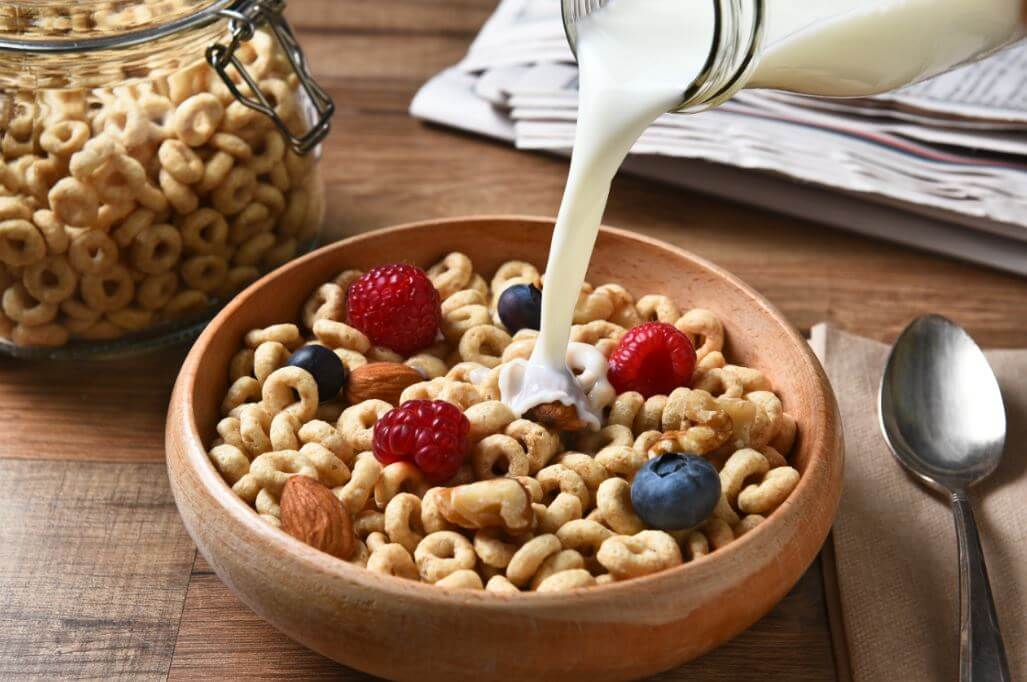Know your Carbohydrates: Healthy Intake

Carbohydrates are a hot topic for discussion. Statements such as, “Eating carbs makes you fat!” Or “You shouldn’t eat carbs at night!” Flood media and social networks. But, you should know that not all carbs are the same, nor do they impact your body in the same way.
Carbohydrates: sources
Carbohydrates are also called sugars or saccharides. They’re macronutrients that you can find in external or internal sources. In the case of the former, your body can obtain carbohydrates from the food that it consumes while in the latter, the body forms its own carbohydrates.
You can find carbohydrates in the following sources:
- Grains.
- Produce and vegetables.
- Legumes.
- Tubers, such as potatoes.
- Fruits.
- Sweets, jams, jellies, and marmalade.
- Milk and other dairy products.
Types of carbohydrates
Let’s take a closer look at the chemical composition and size of carbohydrates. We can divide them into three groups: simple sugars, oligosaccharides, and polysaccharides. But you can simplify the groups even more into the well-known concept of simple and complex carbs.
Simple sugars
Simple sugars are present in foods with low nutritional value. For example, you can find them in commercial baked goods, cookies, commercial juices, and other similar food products.
Complex sugars
Complex sugar sources include potatoes, whole grains, and legumes. These foods are a great source of fiber. Complex carbs require longer and more thorough digestion. As a result, the release and absorption of glucose are slower and more gradual, which prevents spikes in blood sugar levels.
Try imagining it like this: a peach. In this example, eating a peach slowly reflects the effect that complex carbs have whereas eating it entirely in one go would reflect that of simple carbs.

If you eat a peach slowly, each bite reveals the pit more and more. In other words, the release of glucose is slow and steady. But if you eat it entirely, the release and absorption are quicker and more direct.
When someone, such as a diabetic, suffers from a drop in blood sugar levels, he or she needs to raise their levels as quickly as possible. In such cases, simple sugars, such as a piece of candy, are an appropriate solution.
Carbohydrate intake: what carbohydrates do for your body
Carbohydrate’s biggest job is supplying your body with energy. Glucose is the main energy source that your metabolism uses. But, supplying energy isn’t carbohydrate’s only purpose. Other important jobs include:
- Participating in the biosynthesis of fatty acids and certain amino acids. Amino acids are the links that form proteins.
- Carbohydrates are present in other important complex molecules such as nucleic acids. They play a fundamental role in forming new cells.
- They also provide dietary fiber. Fiber is carbs that the body can’t digest and they help to form solid waste.
- Carbohydrates also form special molecules called peptidoglycan, which is present in the cell walls of bacteria.
Glycemic Index (GI) and Glycemic Load (GL)
GI is a system that measures how much food can increase blood sugar levels. It compares that capacity with the results of ingesting pure glucose in the same quantity, which has a 100-value.
Thus, if a certain food has a GI-value of 30, it means that blood sugar levels rise 70 percent less than they would after having ingested the same quantity of pure glucose. You can find several food charts that outline GI values, such as the charts prepared by Harvard. Generally speaking, people consider:
- High GI-values to be higher than 70.
- Intermediate values to range between 55 and 70.
- and low values to be lower than 55.

Aside from the Glycemic Index, you should also understand Glycemic Load, which relates GI to a food’s carbohydrate content. To give you an idea, pineapple has a high GI-value, but it has a low GL-value. The Glycemic Load system is much more useful for discerning the quality and benefits of a given diet.
Carbohydrates: nutritional recommendations
When you eat an excess of carbohydrates, they build up in cells as glycogen. Your body uses these molecules for energy in between meals or during exercise.
We want to mention that the accumulation of body fat that we see in obesity is linked to excessive consumption of all kinds of foods; obesity doesn’t solely result from high carbohydrate intake. In light of that, you should carefully consider how much and what you consume in your diet.
While there are no set rules for carb-consumption, you should aim mainly for complex carbs and limit those with a high GL-value.
In any case, you should limit your consumption of simple carbs. Nutritional education is a crucial step towards empowerment and understanding your health.
Carbohydrates are a hot topic for discussion. Statements such as, “Eating carbs makes you fat!” Or “You shouldn’t eat carbs at night!” Flood media and social networks. But, you should know that not all carbs are the same, nor do they impact your body in the same way.
Carbohydrates: sources
Carbohydrates are also called sugars or saccharides. They’re macronutrients that you can find in external or internal sources. In the case of the former, your body can obtain carbohydrates from the food that it consumes while in the latter, the body forms its own carbohydrates.
You can find carbohydrates in the following sources:
- Grains.
- Produce and vegetables.
- Legumes.
- Tubers, such as potatoes.
- Fruits.
- Sweets, jams, jellies, and marmalade.
- Milk and other dairy products.
Types of carbohydrates
Let’s take a closer look at the chemical composition and size of carbohydrates. We can divide them into three groups: simple sugars, oligosaccharides, and polysaccharides. But you can simplify the groups even more into the well-known concept of simple and complex carbs.
Simple sugars
Simple sugars are present in foods with low nutritional value. For example, you can find them in commercial baked goods, cookies, commercial juices, and other similar food products.
Complex sugars
Complex sugar sources include potatoes, whole grains, and legumes. These foods are a great source of fiber. Complex carbs require longer and more thorough digestion. As a result, the release and absorption of glucose are slower and more gradual, which prevents spikes in blood sugar levels.
Try imagining it like this: a peach. In this example, eating a peach slowly reflects the effect that complex carbs have whereas eating it entirely in one go would reflect that of simple carbs.

If you eat a peach slowly, each bite reveals the pit more and more. In other words, the release of glucose is slow and steady. But if you eat it entirely, the release and absorption are quicker and more direct.
When someone, such as a diabetic, suffers from a drop in blood sugar levels, he or she needs to raise their levels as quickly as possible. In such cases, simple sugars, such as a piece of candy, are an appropriate solution.
Carbohydrate intake: what carbohydrates do for your body
Carbohydrate’s biggest job is supplying your body with energy. Glucose is the main energy source that your metabolism uses. But, supplying energy isn’t carbohydrate’s only purpose. Other important jobs include:
- Participating in the biosynthesis of fatty acids and certain amino acids. Amino acids are the links that form proteins.
- Carbohydrates are present in other important complex molecules such as nucleic acids. They play a fundamental role in forming new cells.
- They also provide dietary fiber. Fiber is carbs that the body can’t digest and they help to form solid waste.
- Carbohydrates also form special molecules called peptidoglycan, which is present in the cell walls of bacteria.
Glycemic Index (GI) and Glycemic Load (GL)
GI is a system that measures how much food can increase blood sugar levels. It compares that capacity with the results of ingesting pure glucose in the same quantity, which has a 100-value.
Thus, if a certain food has a GI-value of 30, it means that blood sugar levels rise 70 percent less than they would after having ingested the same quantity of pure glucose. You can find several food charts that outline GI values, such as the charts prepared by Harvard. Generally speaking, people consider:
- High GI-values to be higher than 70.
- Intermediate values to range between 55 and 70.
- and low values to be lower than 55.

Aside from the Glycemic Index, you should also understand Glycemic Load, which relates GI to a food’s carbohydrate content. To give you an idea, pineapple has a high GI-value, but it has a low GL-value. The Glycemic Load system is much more useful for discerning the quality and benefits of a given diet.
Carbohydrates: nutritional recommendations
When you eat an excess of carbohydrates, they build up in cells as glycogen. Your body uses these molecules for energy in between meals or during exercise.
We want to mention that the accumulation of body fat that we see in obesity is linked to excessive consumption of all kinds of foods; obesity doesn’t solely result from high carbohydrate intake. In light of that, you should carefully consider how much and what you consume in your diet.
While there are no set rules for carb-consumption, you should aim mainly for complex carbs and limit those with a high GL-value.
In any case, you should limit your consumption of simple carbs. Nutritional education is a crucial step towards empowerment and understanding your health.
All cited sources were thoroughly reviewed by our team to ensure their quality, reliability, currency, and validity. The bibliography of this article was considered reliable and of academic or scientific accuracy.
- Nelson DL et Cox M. Lehninger: principios de bioquímica. 2015.
- Salas-Salvadó J et al. Nutrición y dietética clínica. Elsevier Health Sciences, 2019.
This text is provided for informational purposes only and does not replace consultation with a professional. If in doubt, consult your specialist.








